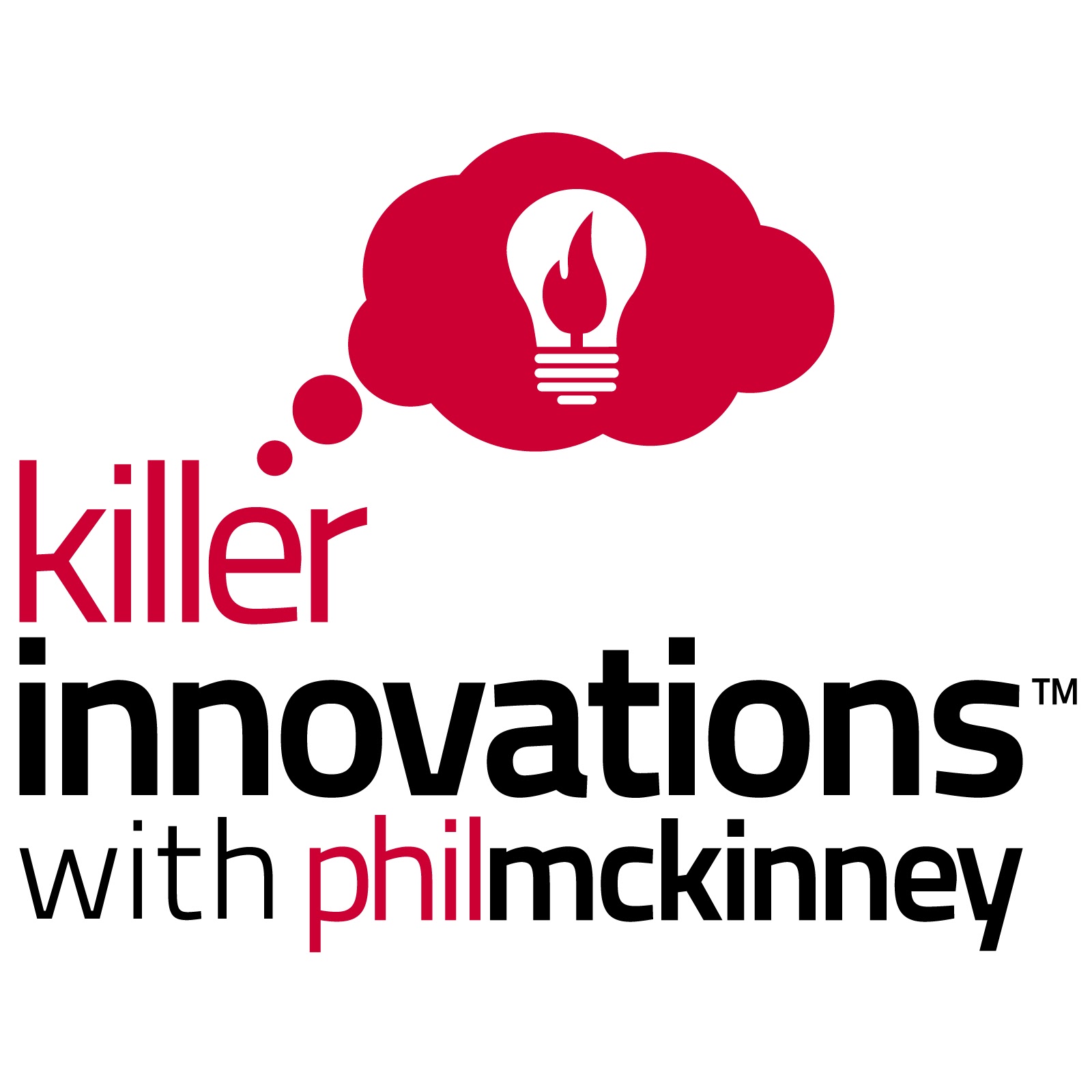

Killer Innovations with Phil McKinney - A Show About Ideas Creativity And Innovation
Phil McKinney
An award winning podcast and nationally syndicated radio show that looks at the innovations that are changing our lives and how their innovators used creativity and design to take their raw idea and create a game-changing product or service.
Episodes
Mentioned books

15 snips
Aug 19, 2025 • 33min
How To Master Lateral Thinking Skills
Explore the power of lateral thinking to unlock creativity and revolutionize problem-solving. Discover how a software engineer turned a random word into a million-dollar algorithm by thinking differently. Delve into case studies, like those of Netflix and IKEA, that showcase the impact of challenging conventional wisdom. Learn practical techniques, including assumption-breaking and escalation challenges, that can transform your approach to innovation. With structured methods at your fingertips, get ready to enhance your problem-solving skills!

13 snips
Aug 12, 2025 • 23min
Why ‘Fail Fast’ Innovation Advice Is Wrong
Challenging the popular 'fail fast' mentality, the discussion highlights how it can stifle innovative ideas before they have a chance to bloom. A captivating story about a glass of water illustrates the importance of patience in nurturing promising technologies. The speaker emphasizes five key signs that indicate when to invest more time in an idea. Additionally, the concept of patient innovation is explored, advocating for long-term funding strategies that can lead to transformative advancements, as seen in the evolution of companies like Dell and Bose.

7 snips
Aug 5, 2025 • 22min
Innovation Partnership Autopsy: HP, Fossil, and the Smartwatch Market
Explore the highs and lows of a crucial innovation partnership between HP and Fossil, which could have revolutionized the smartwatch market. Discover the pitfalls of poor decision-making and leadership chaos that led to lost opportunities. Learn about the DECIDE framework, a structured approach to make informed choices in partnerships. The discussion highlights what made the collaboration promising and why it ultimately failed, all while framing lessons that can transform future innovation opportunities.

12 snips
Jul 29, 2025 • 26min
Why Great Innovators Read Rooms, Not Just Data
Great leaders possess a unique ability to read the mood in a room, using intuition to guide their decisions. This innate skill isn't just instinct; it's a sophisticated processing of patterns and cues. The discussion highlights how intuitive judgment can be enhanced through practical thinking and understanding human behavior. Discover why some individuals seem to have sharper instincts and how you can develop your own intuition for better decision-making.

11 snips
Jul 1, 2025 • 20min
Why Your Best Employees Are Sabotaging Your Decisions (And How to Fix It)
Explore the cautionary tale of the HP Envy 133: a $25 million decision gone wrong. Discover how psychological traps can blindside teams, resulting in filtered information and missed opportunities. Learn about five actionable strategies to foster transparent communication. Unearth the importance of confronting uncomfortable truths with techniques like pre-mortem confessions and adopting a devil's advocate role. Cultivating a culture of truth-telling paves the way for better decision-making and innovation.

11 snips
Jun 24, 2025 • 15min
3 Innovation Decision Traps That Kill Breakthrough Ideas (And How to Avoid Them)
Breakthrough innovations often start as seemingly terrible ideas that challenge the status quo. The podcast discusses how conventional evaluation questions can blind us to transformative opportunities. Key decision traps are revealed, including the 'Useless Filter,' which dismisses ideas that create new behaviors rather than solving existing problems. Real-world examples like Airbnb illustrate how revolutionary concepts can reshape industries. By asking the right questions, innovators can unlock the potential of ideas that initially appear absurd.

8 snips
Jun 10, 2025 • 30min
The $1.2 Billion Innovation Disaster: 5 Decision Mistakes That Kill Breakthrough Technology (HP WebOS Case Study)
Discover the tale of how HP squandered $1.2 billion on Palm's WebOS in just 49 days. It reveals surprising cognitive errors made by brilliant minds under pressure. The discussion uncovers the pitfalls of relying on outdated metrics while assessing innovative technology. Learn about the DECIDE framework designed to reshape decision-making and avoid innovation failures. Dive deep into the critical role of effective choices in navigating uncertainty and ensuring the success of breakthrough technologies.

13 snips
Jun 3, 2025 • 29min
How AI Dependency Is Rewiring Your Child’s Creative Brain (And What Parents Can Do About It)
A striking revelation from University of Washington researchers highlights that children using AI for creativity struggle to create independently. Most parents are unaware of this troubling trend. The discussion emphasizes that children's brains are more susceptible to AI dependency than adults. Insightful strategies for fostering resilience in young minds and nurturing their innate creativity are shared. Parents gain valuable tools to recognize potential AI overreliance in their children and practical steps to encourage independent thinking.

20 snips
May 27, 2025 • 34min
Human-AI Creative Partnership: How to Harness AI While Preserving Your Innovative Edge
Discover how the most innovative thinkers view AI as a strategic partner rather than a replacement. Learn about a five-step framework designed to enhance creative thinking by harmonizing human insight with AI capabilities. Explore how this partnership can transform product development through a human-centric approach. Delve into the difference between convergent thinking and machine processing, highlighting how AI can handle routine tasks, leaving humans free for breakthrough ideas. Embrace AI to amplify your unique creativity!

13 snips
May 20, 2025 • 29min
How to Strengthen Creative Thinking: The 10-Minute Daily Brain Workout Based on Neuroplasticity Research
Unlock your creativity with a daily 10-minute brain workout that boosts innovative thinking! Discover how neuroplasticity can revitalize your creative juices, reversing the decline caused by AI reliance. Engage in exercises focusing on cognitive flexibility, associative and divergent thinking, and breaking constraints. These practical techniques help forge strong neural pathways, enhancing both problem-solving skills and your ability to think outside the box. Embrace your uniquely human creativity and strengthen your mind!


